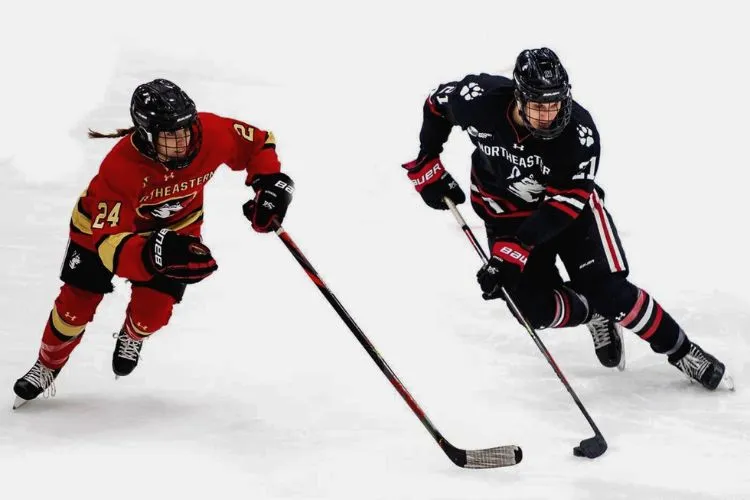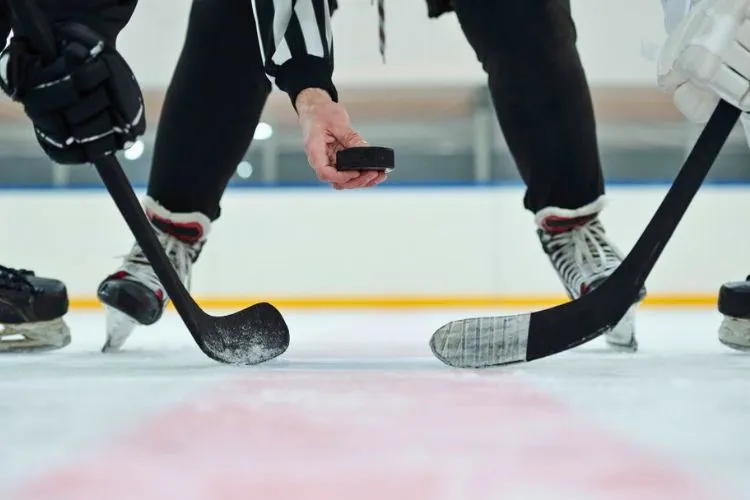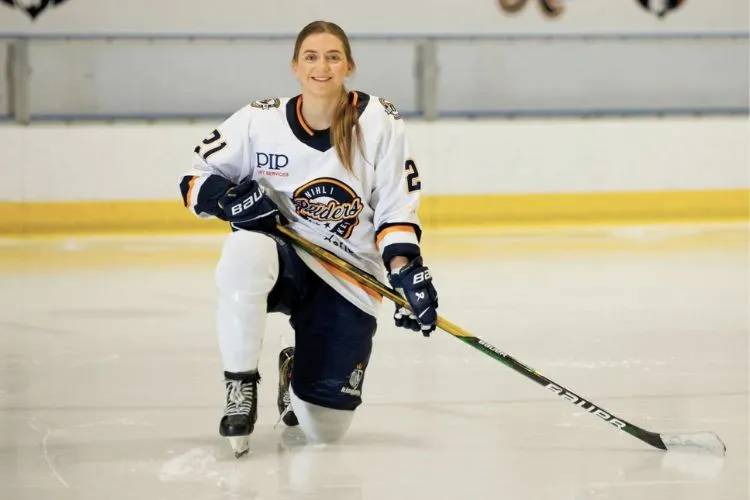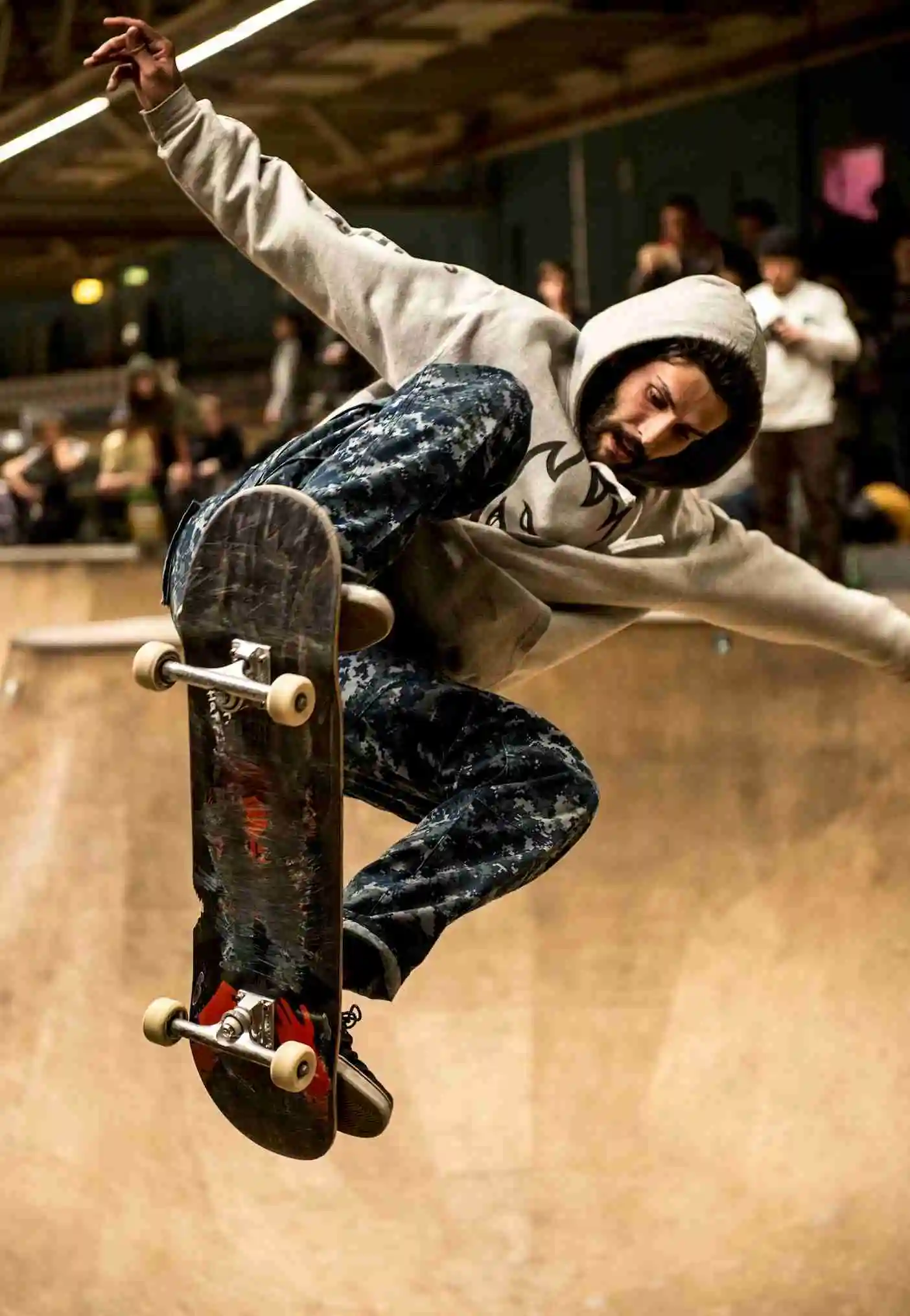Ice hockey is a game that combines speed, skill, and strategy, played by two teams trying to score goals with a hard rubber puck.
While the sport can be fast-paced and chaotic to the uninitiated, at its heart it follows a structured set of rules designed to maintain fair play and ensure the safety of all participants. Let’s learn ice hockey rules.

The Basics of the Game
At its core, the objective of ice hockey is to score more goals than the opposing team. Teams consist of forwards, defensemen, and a goaltender. Each contributes differently to the team’s play, whether it’s scoring goals, defending their zone, or stopping shots.
The typical ice hockey rink is a rectangle with rounded corners and surrounded by walls. Markings on the ice define areas like the goal crease, face-off spots, and the blue lines that divide the rink into zones.
Key Rules of Ice Hockey
Starting the Game
Every game and period within an ice hockey match begins with a face-off. Players from each team face each other and wait for the official to drop the puck to start play. Positioning for these face-offs is determined by dots and markings on the rink.
Game Duration
An ice hockey game is typically divided into three periods lasting 20 minutes each. If the game is tied at the end of the third period, teams may play an overtime period, followed by a shootout if the tie persists.
Scoring
A goal is scored when the puck completely crosses the goal line within the net frame. The rules protect the goalie’s ability to defend the net and include specifications about when and how players may attempt to score.
Offside and Icing
An offside is called when a player enters the offensive zone before the puck. Icing occurs when a player shoots the puck across both the center red line and the opposing team’s goal line without it being touched.
Penalties and Infractions
Types of Penalties
Penalties range from minor (two minutes) to major (five minutes) and misconducts, which can result in ejection from the game. Penalty shots are awarded for specific infractions, like when a clear scoring chance is impeded illegally.

Common Infractions
Several actions are penalized in hockey, typically for safety reasons. These include tripping, holding, high-sticking, slashing, boarding, and checking from behind, all of which carry various penalty minutes if called.
The Penalty Box
Players serve their penalty time in the penalty box, off the ice. Their team must play shorthanded, but if a goal is scored by the opposing team during a minor penalty, the penalized player is allowed to return to play.
Player Equipment and Safety
Players wear a range of equipment, from helmets and shoulder pads to shin guards and gloves, all designed to provide protection and freedom of movement. The goaltender wears special gear that is larger and more padded to guard against puck impacts.
Advanced Rules and Situations
Power Plays and Penalty Kills
When a team has a player advantage due to an opposing player serving penalty time, it’s called a power play. The team with fewer players has a penalty kill. Each scenario requires specific tactics and coordination.
Face-off Techniques and Strategies
Face-offs can provide a strategic advantage. Winning the puck drop often leads to control of play, and teams practice various techniques to maximize their chances of winning these encounters.
Playing the Puck
The puck can be passed between players or shot towards the goal in various ways. Certain actions, like high-sticking or playing the puck with a hand pass, are restricted.
Referees and Officials
Officials are responsible for enforcing the rules of the game. They include referees and linesmen who call penalties, start and stop play, and maintain order on the ice.
History of Ice Hockey Rules
The evolution of ice hockey rules has significantly shaped the dynamic and pace of modern hockey. Originally, games lacked standardization in rules and number of players until the late 19th century when the first formal rules were codified in Montreal, leading to more organized play.

Key historical changes include the introduction of the forward pass in the 1920s, previously disallowed outside a team’s defensive zone, revolutionizing offensive strategy and speeding up the game.
The implementation of the blue lines in 1918 to define zones and the offside rule further structured gameplay.
Additionally, advancements like the introduction of the goalie’s ability to catch the puck (1930s), the establishment of penalties for infractions, and recent video review for goal confirmation have all been pivotal.
These rule adjustments reflect the sport’s ongoing efforts to balance fairness, safety, and entertainment value, culminating in the fast-paced, strategic game enjoyed by fans today.
You may also like to read: How Long Does an Ice Hockey Game Last? | What Is a Power Play in Hockey?
Frequently Asked Questions (FAQs)
What is the difference between minor and major penalties?
A minor penalty results in two minutes of play without the penalized player, while a major penalty lasts for five minutes, regardless of how many goals are scored during this time.
Can a goal be scored directly from a face-off?
Yes, a player can shoot the puck into the net directly from a face-off. However, this is a rare occurrence due to the difficulty and required precision.
What are the dimensions of an ice hockey rink?
A standard ice hockey rink is 200 feet long and 85 feet wide, with a corner radius of 28 feet.
How is offside determined in ice hockey?
A player is offside if they enter the offensive zone before the puck crosses the blue line entirely.
What actions can lead to a player being ejected from the game?
Actions like fighting, misconduct penalties, or accumulating a certain number of penalties during a game can all lead to a player being ejected.
How does overtime work in playoff games?
In playoff games, teams play 20-minute periods of sudden-death overtime until a goal is scored. There are no shootouts in playoff games.
Conclusion
Understanding the intricate rules of ice hockey enhances one’s appreciation of the sport’s skill and strategy, solidifying its reputation as a fast-paced and thrilling game.
As the rules continue to evolve with the sport, they ensure fair play and excitement for players and fans alike.
This guide intends to provide readers with an understanding of ice hockey rules, enhancing their appreciation of the game’s nuances. Whether a seasoned fan or a newcomer, grasping these rules is key to enjoying ice hockey in all its thrilling glory.

Matthew James is a passionate skater who wanted to create a platform to share his love for skating with others. With a vision to create a vibrant community of skaters, he aims to provide a space where skaters of all levels can connect, learn, and grow together.
